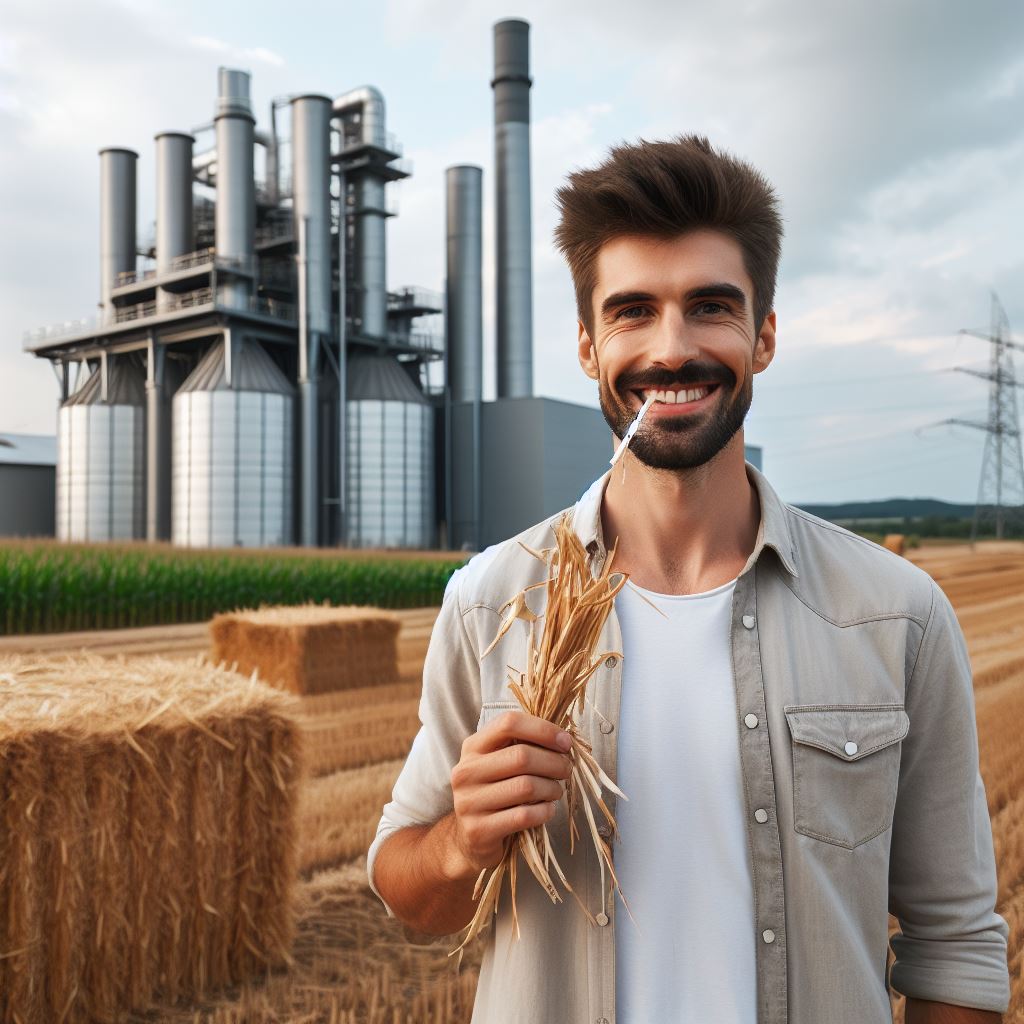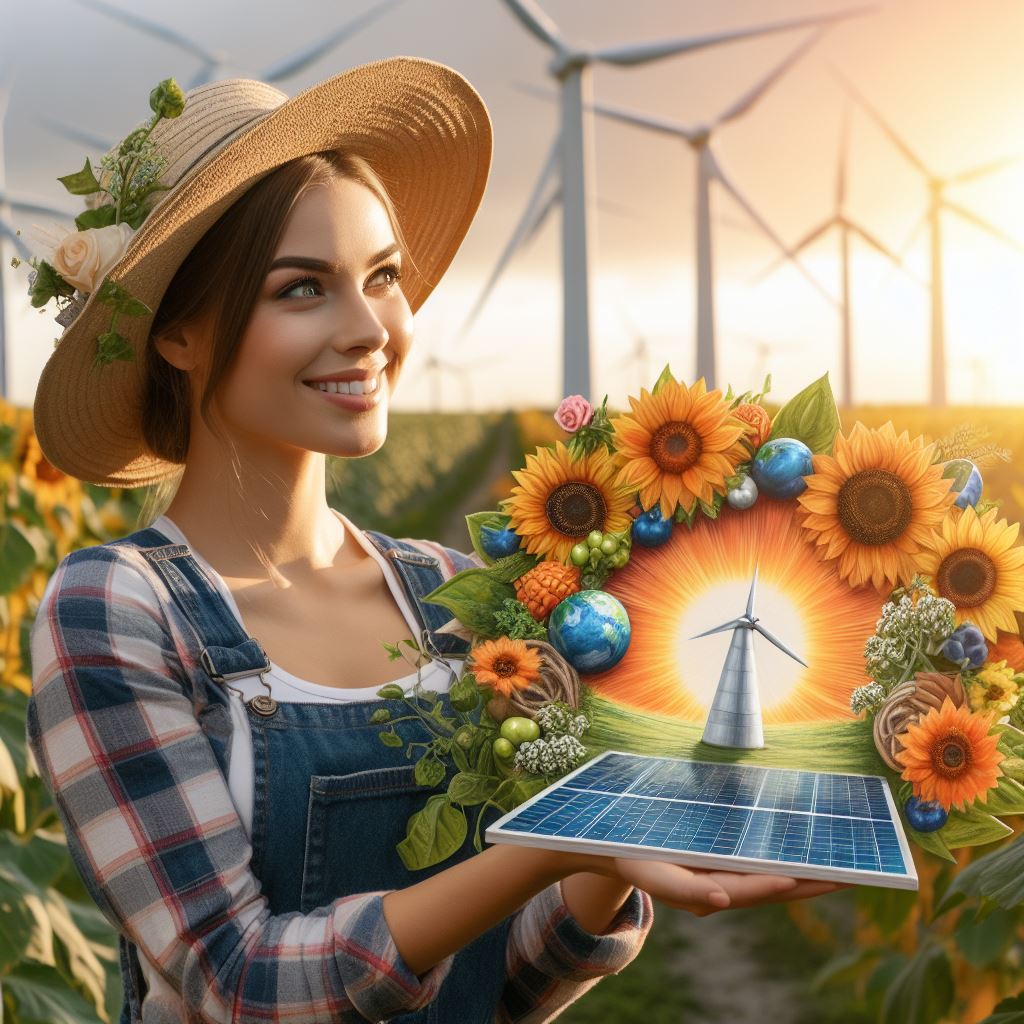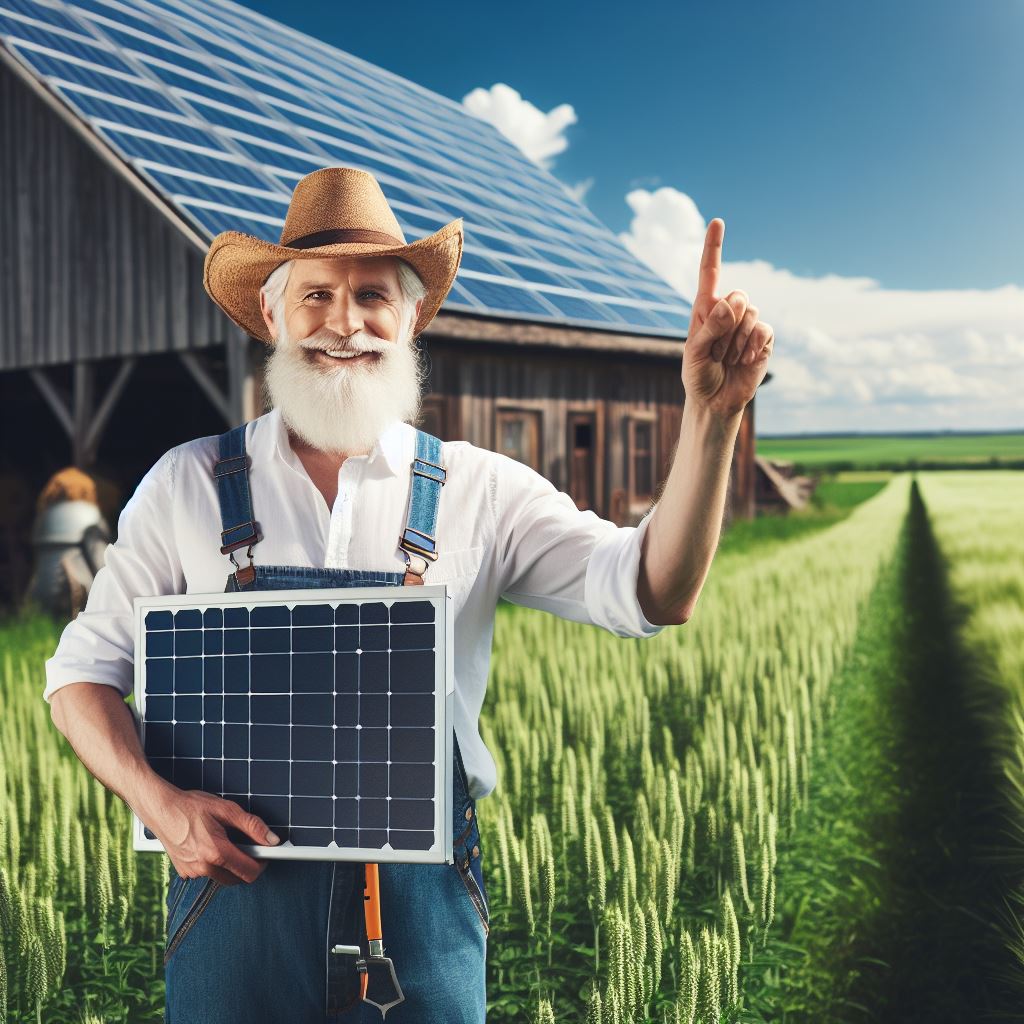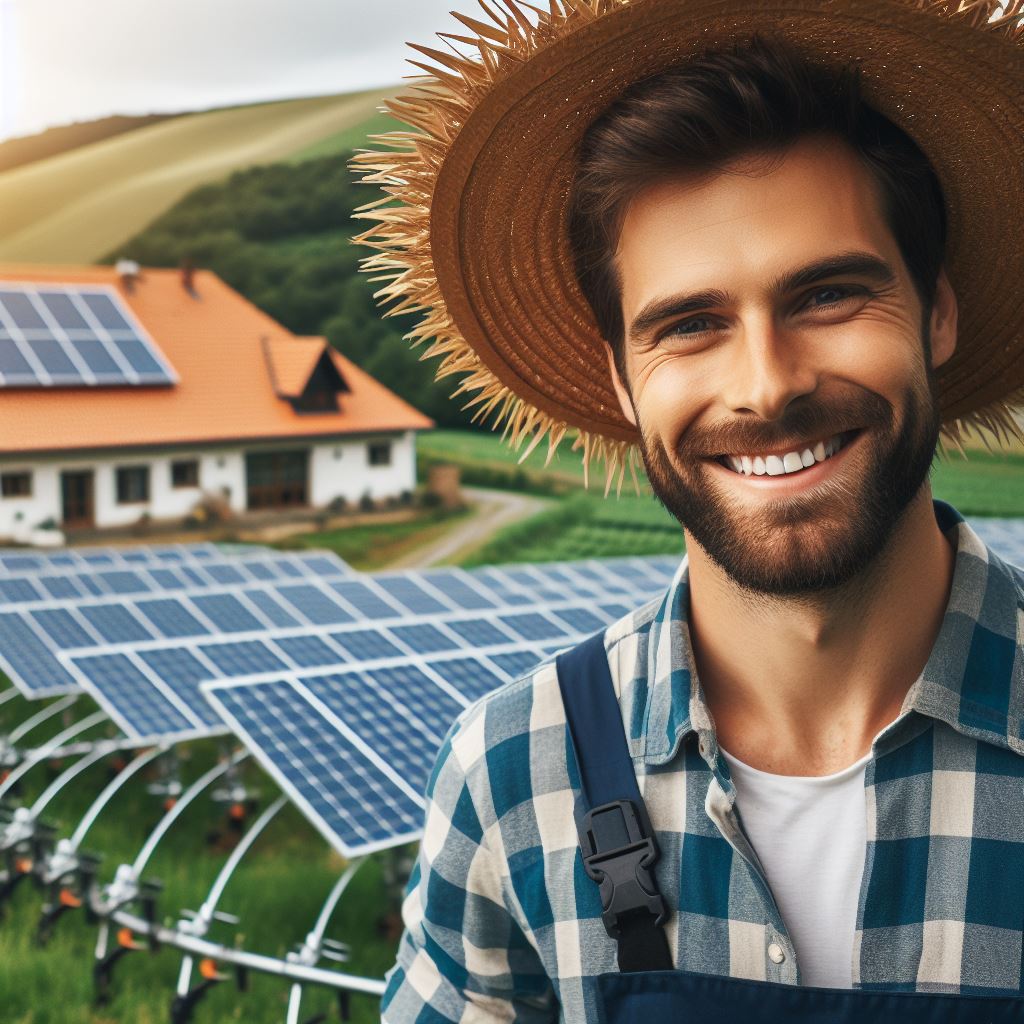Introduction
A. Importance of Renewable Energy in Agriculture
In modern farming, renewable energy plays a pivotal role. It ensures sustainability, reduces environmental impact, and fosters resilience.
B. Introduction to Wind Turbines as a Source of Renewable Energy
Wind turbines, silent behemoths on the agricultural horizon, harness nature’s power to generate clean, reliable electricity.
They epitomize innovation in sustainable farming practices.
C. Benefits of Wind Turbines in Farming
- Cost Efficiency: Wind energy substantially cuts electricity costs, empowering farmers with economical and eco-friendly alternatives.
- Environmental Impact: Wind turbines produce no emissions, curbing the carbon footprint of farming operations and preserving the land for future generations.
- Energy Independence: By harnessing wind power, farmers gain energy independence, reducing reliance on external sources and stabilizing energy costs.
- Diversification: Integrating wind turbines diversifies income streams, offering farmers a new dimension in profitability while contributing to a greener planet.
In this silent alliance, wind turbines emerge as farming’s indispensable partners, driving sustainability, profitability, and a brighter agricultural future.
Understanding Wind Turbines
Wind turbines are a fascinating and eco-friendly alternative energy source that has gained popularity in recent years.
These towering structures harness the power of the wind to generate electricity.
In this sectin, we will explore how wind turbines work, the components that make them up, and the different types available.
A. How wind turbines work
- Wind turbines operate on a simple principle: the wind turns the blades, which spins a generator, producing electricity.
- When the wind blows, it creates a difference in air pressure on the windward and leeward sides of the rotor blades.
- This pressure difference causes the blades to spin, converting kinetic energy from the wind into mechanical energy.
- The mechanical energy is then transferred to a gearbox, which increases the speed of rotation and drives the generator.
- The generator uses electromagnetic induction to convert the mechanical energy into electrical energy that can be used to power homes and businesses.
B. Components of a wind turbine
- Blades: The most recognizable part of a wind turbine, the blades capture the wind’s energy and convert it into rotational motion.
- Gearbox: The gearbox increases the speed of the rotor and transfers the energy from the blades to the generator.
- Generator: The generator converts the mechanical energy from the gearbox into electrical energy.
- Tower: The tower supports the rotor and houses the mechanical and electrical components of the wind turbine.
- Control System: The control system monitors and regulates the turbine’s operation, ensuring optimal performance.
C. Different types of wind turbines
- Horizontal-Axis Wind Turbines (HAWT): This is the most commonly used type of wind turbine, with blades that rotate on a horizontal axis.
- Vertical-Axis Wind Turbines (VAWT): These turbines have blades that rotate on a vertical axis, making them less dependent on wind direction.
- Onshore Wind Turbines: These turbines are installed on land and are larger in size, as they can take advantage of higher wind speeds.
- Offshore Wind Turbines: These turbines are located in bodies of water, where winds are stronger and more consistent.
- Small-Scale Wind Turbines: These turbines are designed for residential or small-scale commercial use, typically with a capacity of less than 100 kilowatts.
In short, wind turbines are complex machines that play a crucial role in producing clean and sustainable energy.
Understanding how they work, their components, and the different types available helps us appreciate their significance in mitigating climate change and promoting a greener future.
Read: Solar Solutions for Modern Farms
Benefits of Wind Turbines in Farming
Wind turbines not only provide clean and renewable energy, but they also offer numerous benefits to farmers.
Here are some advantages:
- Reducing energy costs for farmers: Wind turbines harness the power of the wind to generate electricity, which can significantly reduce farmers’ reliance on grid power and lower their energy bills.
- Contributing to environmental sustainability: By using wind energy instead of traditional fossil fuels, farmers can minimize their carbon footprint and help combat climate change.
- Providing a reliable and consistent power source: Wind energy is consistent and predictable, ensuring a stable power supply for farming operations throughout the year.
- Reducing reliance on non-renewable energy: Wind turbines enable farmers to shift away from non-renewable energy sources like coal and oil, promoting a more sustainable and greener farming industry.
Now, let’s delve deeper into each of these benefits:
A. Reducing energy costs for farmers
Farmers often face high energy costs due to the extensive power requirements of their operations.
Wind turbines allow them to generate their own electricity, reducing their dependence on expensive grid power and saving money in the long run.
Transform Your Agribusiness
Unlock your farm's potential with expert advice tailored to your needs. Get actionable steps that drive real results.
Get StartedThe initial investment in installing wind turbines can be offset by the long-term energy savings they provide.
B. Contributing to environmental sustainability
Agriculture is a crucial sector for sustainable development, and wind turbines play a vital role in promoting eco-friendly farming practices.
By opting for wind energy, farmers can significantly reduce greenhouse gas emissions, air pollution, and reliance on finite resources.
This helps protect the environment and ensures a healthier future for both agricultural communities and the planet as a whole.
C. Providing a reliable and consistent power source
Farming operations require a stable and uninterrupted power supply.
Wind energy offers a dependable source of electricity as long as there is adequate wind.
Even in regions with fluctuating weather conditions, wind turbines can be strategically located to capture the maximum wind power, ensuring a continuous and reliable energy source for farms.
D. Reducing reliance on non-renewable energy
Conventional energy sources such as fossil fuels are not only detrimental to the environment but also subject to unpredictable price fluctuations.
By investing in wind turbines, farmers can become more self-sufficient and reduce their vulnerability to volatile energy markets.
Wind energy is an abundant and inexhaustible resource, providing a stable and affordable alternative for powering agricultural operations.
In fact, wind turbines offer significant benefits to farmers and the farming industry as a whole.
They not only reduce energy costs, but also contribute to environmental sustainability, provide reliable power, and help reduce reliance on non-renewable energy sources.
Installing wind turbines on farms is a smart investment that allows farmers to become more sustainable, save money, and contribute to a greener future.
Read: Biomass Energy: Farming’s New Ally
Applications of Wind Turbines in Agriculture
Wind turbines have proven to be valuable assets in the agricultural industry, providing several applications that benefit farmers and their operations.
These silent helpers offer an environmentally friendly solution to power needs and enhance sustainability in farming.
Here are some of the applications of wind turbines in agriculture:
A. Powering irrigation systems
Wind turbines can be connected to irrigation pumps to harness wind energy and provide a reliable power source for watering crops.
This reduces dependency on fossil fuels and helps cut down operational costs.
B. Running machinery and equipment
By harnessing wind power, farmers can use wind turbines to operate various machinery and equipment required for farming activities.
This includes grain mills, threshers, silo fans, and more.
C. Generating electricity for farm buildings
Wind turbines can be installed to generate electricity that powers farm buildings, such as barns, sheds, and storage facilities.
This renewable energy source reduces the reliance on traditional electricity grids and lowers utility expenses.
D. Selling excess electricity to the grid
In addition to meeting their own energy needs, farmers can also sell surplus electricity generated by wind turbines back to the power grid.
Showcase Your Farming Business
Publish your professional farming services profile on our blog for a one-time fee of $200 and reach a dedicated audience of farmers and agribusiness owners.
Publish Your ProfileThis creates an additional source of income for agricultural operations.
These applications highlight the versatility and benefits of wind turbines in the agricultural sector.
They promote sustainability, reduce carbon footprint, and offer economic advantages.
With the right installation and maintenance, wind turbines can contribute to a more efficient and environmentally conscious farming experience.
Read: Agriculture’s Wind Power Transformation
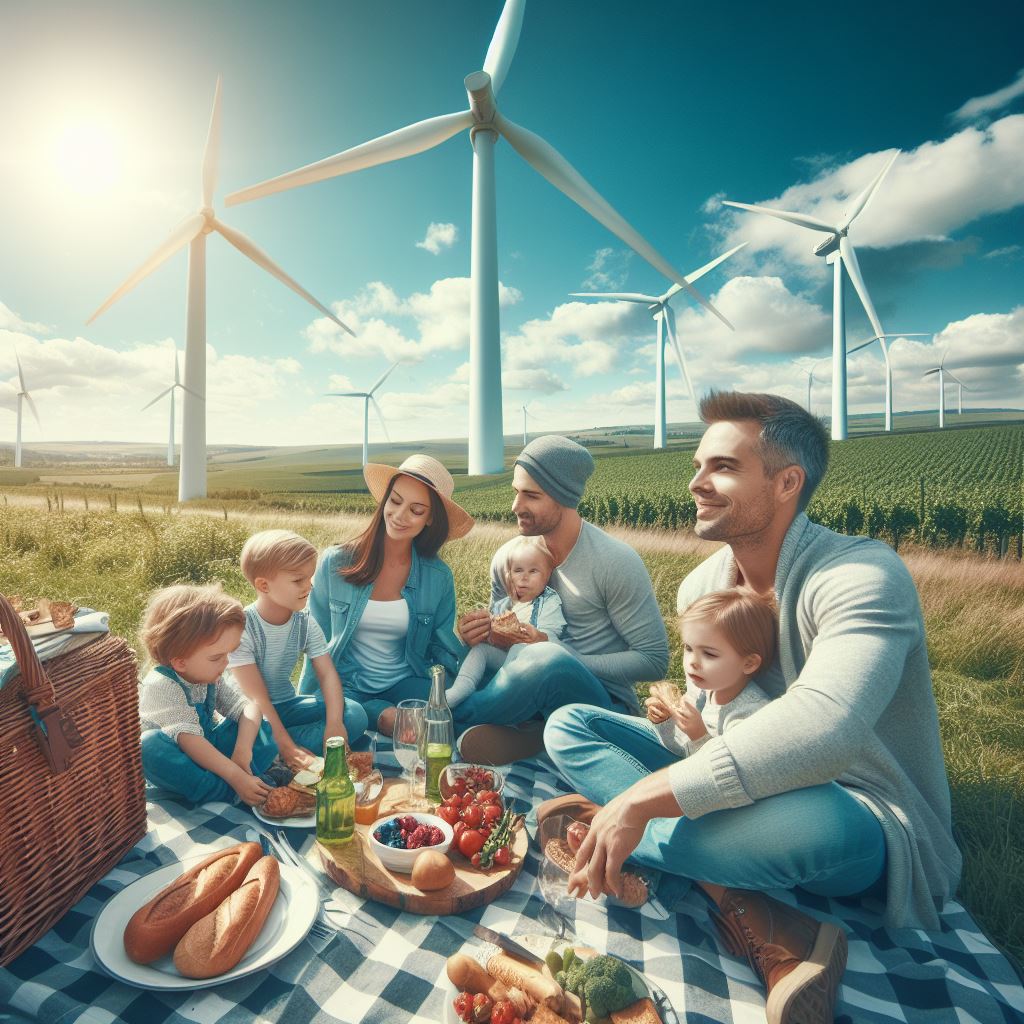
Considerations for Wind Turbine Implementation
Implementing wind turbines on a farm requires careful considerations to ensure successful installation and operation.
A. Evaluating site suitability
- Evaluating wind speed is crucial as it determines the turbine’s effectiveness in generating electricity.
- Assessing turbulence levels helps in selecting the right wind turbine design for optimal performance.
- Identifying obstacles like tall buildings or trees is essential to avoid turbulent airflow patterns.
B. Understanding zoning and permits regulations
- Reviewing zoning laws is necessary to determine if wind turbines are allowed on the property.
- Obtaining the required permits ensures compliance with local regulations and smooth project execution.
- Understanding setback requirements protects neighboring properties from potential adverse effects.
C. Financial considerations and incentives
- Calculating the installation cost and potential return on investment helps in making informed decisions.
- Exploring available incentives and tax credits can significantly offset the initial expenses.
- Considering long-term savings from reduced electricity bills adds to the economic feasibility of wind turbines.
D. Maintenance and potential challenges
- Regular maintenance is vital to ensure the longevity and optimal performance of wind turbines.
- Inspecting and repairing any damage promptly helps prevent further issues and costly repairs.
- Addressing potential challenges like bird strikes or ice accumulation ensures safe and reliable operation.
In essence, implementation of wind turbines on farmland requires a comprehensive approach.
Evaluating the site’s suitability, understanding zoning and permit regulations, considering financial aspects and incentives, and preparing for maintenance challenges are key for successful wind turbine integration.
Read: Sustainable Farming with Solar Panels
Case Studies: Success Stories in Wind Turbine Implementation
A. Farms Embracing the Wind
- Johnson Family Farm: Installed turbines, powering irrigation, reducing costs, and elevating sustainability.
- Green Acres Ranch: Integrated turbines, achieving energy independence, fostering eco-friendly practices.
- Sunny Meadows Agriculture: Utilized wind energy, witnessed increased productivity, and minimized environmental impact.
B. Reaping the Rewards
1. Enhanced Energy Efficiency
- Farms reported a substantial reduction in energy costs, contributing to financial stability.
- Increased energy efficiency allowed for optimal operation of farm machinery and irrigation systems.
2. Environmental Stewardship
- Reduced carbon footprint: Turbines helped farms transition towards sustainable, eco-friendly practices.
- Mitigated reliance on conventional energy sources, minimizing environmental impact.
3. Economic Empowerment
- Turbine integration resulted in a new revenue stream through surplus energy sales.
- Farms experienced enhanced competitiveness in the market, attracting environmentally conscious consumers.
C. Lessons Learned and Advice for Peers
1. Strategic Placement
- Lesson: Optimal turbine placement is crucial for harnessing maximum wind energy.
- Advice: Conduct a thorough wind assessment to identify prime locations for turbine installation.
2. Maintenance is Key
- Lesson: Regular maintenance is vital to ensure turbine longevity and sustained energy production.
- Advice: Establish a proactive maintenance schedule and invest in skilled technicians.
3. Community Engagement
- Lesson: Engage with the local community to address concerns and garner support.
- Advice: Proactively communicate the benefits of wind turbines, fostering positive relationships.
4. Financial Planning
- Lesson: Upfront costs can be high; strategic financial planning is imperative.
- Advice: Explore government incentives and financing options to alleviate initial financial burdens.
In a nutshell, these case studies showcase the transformative impact of wind turbines on farms.
Beyond cost savings, farms become eco-friendly and economically empowered, setting a positive precedent for sustainable agriculture.
The lessons learned and advice offered pave the way for a seamless integration of wind energy into the agricultural landscape.
Conclusion
Wind turbines play a crucial role in farming, providing multiple benefits.
They contribute to sustainable energy production, reducing dependence on fossil fuels.
Additionally, wind turbines offer financial stability to farmers through energy generation.
It is important to encourage more farmers to consider adopting wind turbines on their farms.
By doing so, they can reap the rewards of clean energy generation while also contributing to a healthier environment.
Wind turbines are indeed farming’s silent helpers, and their importance cannot be overstated.

